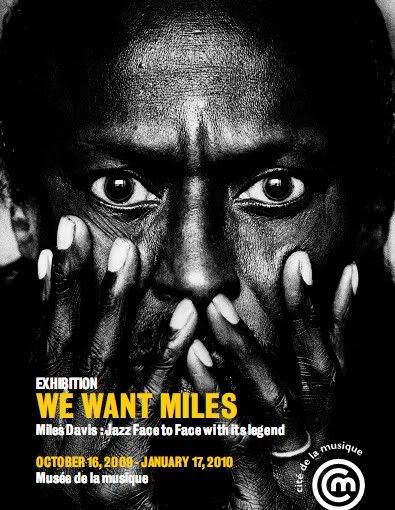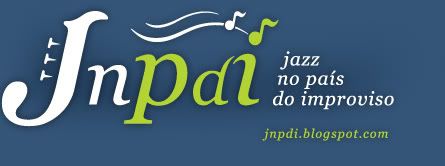Miles Davis: We Want Miles em Paris

Inaugura amanhã em Paris, na Cité de la Musique, uma exposição que presta homenagem a Miles Davis por ocasião do 60.º aniversário do primeiro concerto do trompetista em França.
Através da exibição de 350 objectos (filmes, fotos, manuscritos, partituras, capas de álbuns, vestuário, trompetes) We Want Miles recria o universo deste emblemático músico, desde o seu nascimento, em 1926, até ao seu último espectáculo em Paris, em 1991.

Foto:Patrick Kovarik/AFP
A exposição - que de acordo com Vincent Bessières, comissário do evento, é a maior jamais dedicada a Miles - está dividida em oito secções:
1 - The infuence of the St. Louis musicians who, from New Orleans to Chicago to Kansas City, developed a “school” of trumpet playing that would leave its mark on his own sound;
2 - His affliation to the vanguard of the 1940s, bebop, with the blessing of its mentors Dizzy Gillespie and Charlie Parker, whose regular sideman he became;
3 - The novelty of the arrangements and “soft” quality of sound put out by his frst orchestra, that opened the way to a new jazz – cool jazz – from which Miles would then turn away in order to go back to the basics of afro-american jazz, the expressiveness of blues, the lyricism of standards, along with the main perpetrators of hard bop (Horace Silver, Sonny Rollins, Jackie McLean, Art Blakey, and John Coltrane);
4 - The frst years with Columbia marked by the orchestral works of Gil Evans, his ambitious adaptations of Porgy and Bess and Sketches of Spain, as well as his modal exploration with the sextet, culminating in the masterpiece Kind of Blue;

5 - The so-called Second Quintet with which, in the middle of the 1960s – infuenced as he was by young guns (Wayne Shorter, Herbie Hancock, Ron Carter and Tony Williams) – he shook the very structure of jazz, ushering in a certain rhythmic freedom, while never losing control over his music;
6 - The end of the sixties marked by electric instruments, conceptual albums, and the infuence of Jimi Hendrix, along with all the future heroes of jazz rock (Joe Zawinul, John McLaughlin, Chick Corea…);
7 - The invention of afrofunk based on obsessive beats, and a saturated electric sound with strange undercurrents resulting from his collaboration with Indian musicians – a style with its fnger on the pulse of popular music (Motown, James Brown and Sly Stone);
8 - The rise of pop jazz, marked by new production techniques and synthesizers, his fascination with Prince, his covers of hits, and his close collaboration with Marcus Miller, who composed an entire album for him, Tutu, as a showcase for what had truly become his signature sound. All these “directions in music” – to use a phrase Miles put on his album covers in the middle of the 1960s – bear witness to an incredible creativity and a fully fedged commitment that the exhibition aims to translate the richness, making the most emblematic recordings heard.

Inaugura amanhã em Paris, na Cité de la Musique, uma exposição que presta homenagem a Miles Davis por ocasião do 60.º aniversário do primeiro concerto do trompetista em França.
Através da exibição de 350 objectos (filmes, fotos, manuscritos, partituras, capas de álbuns, vestuário, trompetes) We Want Miles recria o universo deste emblemático músico, desde o seu nascimento, em 1926, até ao seu último espectáculo em Paris, em 1991.

Foto:Patrick Kovarik/AFP
A exposição - que de acordo com Vincent Bessières, comissário do evento, é a maior jamais dedicada a Miles - está dividida em oito secções:
1 - The infuence of the St. Louis musicians who, from New Orleans to Chicago to Kansas City, developed a “school” of trumpet playing that would leave its mark on his own sound;
2 - His affliation to the vanguard of the 1940s, bebop, with the blessing of its mentors Dizzy Gillespie and Charlie Parker, whose regular sideman he became;
3 - The novelty of the arrangements and “soft” quality of sound put out by his frst orchestra, that opened the way to a new jazz – cool jazz – from which Miles would then turn away in order to go back to the basics of afro-american jazz, the expressiveness of blues, the lyricism of standards, along with the main perpetrators of hard bop (Horace Silver, Sonny Rollins, Jackie McLean, Art Blakey, and John Coltrane);
4 - The frst years with Columbia marked by the orchestral works of Gil Evans, his ambitious adaptations of Porgy and Bess and Sketches of Spain, as well as his modal exploration with the sextet, culminating in the masterpiece Kind of Blue;

5 - The so-called Second Quintet with which, in the middle of the 1960s – infuenced as he was by young guns (Wayne Shorter, Herbie Hancock, Ron Carter and Tony Williams) – he shook the very structure of jazz, ushering in a certain rhythmic freedom, while never losing control over his music;
6 - The end of the sixties marked by electric instruments, conceptual albums, and the infuence of Jimi Hendrix, along with all the future heroes of jazz rock (Joe Zawinul, John McLaughlin, Chick Corea…);
7 - The invention of afrofunk based on obsessive beats, and a saturated electric sound with strange undercurrents resulting from his collaboration with Indian musicians – a style with its fnger on the pulse of popular music (Motown, James Brown and Sly Stone);
8 - The rise of pop jazz, marked by new production techniques and synthesizers, his fascination with Prince, his covers of hits, and his close collaboration with Marcus Miller, who composed an entire album for him, Tutu, as a showcase for what had truly become his signature sound. All these “directions in music” – to use a phrase Miles put on his album covers in the middle of the 1960s – bear witness to an incredible creativity and a fully fedged commitment that the exhibition aims to translate the richness, making the most emblematic recordings heard.


0 Comments:
Enviar um comentário
<< Home